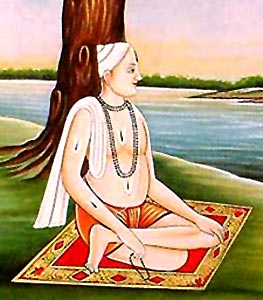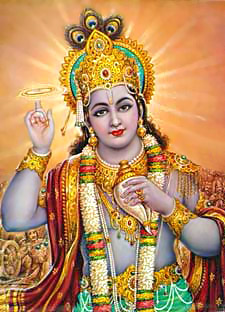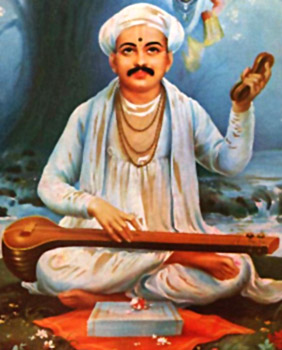 Literature under Hindu kingdoms was given utmost importance. This has been evident from the many monumental works that were produced during this period that includes poetry, narrative literature and plays. The languages which are spoken in various parts of India had been developed during this age.
Literature under Hindu kingdoms was given utmost importance. This has been evident from the many monumental works that were produced during this period that includes poetry, narrative literature and plays. The languages which are spoken in various parts of India had been developed during this age.
Poetry
The various `Apabhramsh` was developed and cultivated and a vast literature grew up.
Among the poets who wrote in the literary `Apabhramsha` were `Sarhapa` (760 A.D.) `Swayambhudeva` (790 A.D.) and `Pushpa-danta` (959-72 A.D.). Swayambhudeva edited both Ramayana and Mahabharata. His narration entitled him to be called a great epic poet. For instance, in Avadhi flourished the great Hindi poet Tulsidas. Ramacharita Manas is the most famous of his works.
Surdas was another great poet. He wrote in Brijbhasha and is probably the greatest lyric poet in the Hindi world. His main work is Sursagar. His themes were devotional and centered round the life of Lord Krishna. Bengali poetry witnessed a significant progress in the realm of poetry. In the tenth century ballads are written to glorify kings of the Pala dynasty. There is the Bengali translation of the Ramayana by Krittivasa in 1370 A.D. The Bhagwat Puran was also translated. Religious poetry was also cultivated by great poets like Sanjay and Kashiram.
 The Marathi vernacular was also developed during this period. The oldest writer is Jnaneshwar who completed his Jnaneshwari in 1290 A.D. It is a commentary on Gita.
Saint Tukaram is said to have written about 4621 `Abhatigs` or devotional songs. Ramdas` contribution cannot be overlooked here. He influenced Shivaji also and organised monasteries all over Maharashtra. It was Ramdas who aroused the Maratha national consciousness.
The Marathi vernacular was also developed during this period. The oldest writer is Jnaneshwar who completed his Jnaneshwari in 1290 A.D. It is a commentary on Gita.
Saint Tukaram is said to have written about 4621 `Abhatigs` or devotional songs. Ramdas` contribution cannot be overlooked here. He influenced Shivaji also and organised monasteries all over Maharashtra. It was Ramdas who aroused the Maratha national consciousness.
The earliest literature in Northern India was the poetical chronicles of Rajputana. In these chronicles there is narration of the deeds performed by the Rajput heroes of the age. The most famous was Prithviraj Raso by Chand Bardai.
The Punjabi literature witnessed a development of ballads that contained the stories of ancient heroes with their joys and sorrows are narrated. Vidyapati Thakur of Bihar wrote allegory portraying the love of Radha and Krishna in Maithili language in 1400 A.D.  The medieval age witnessed the foundation and the evolution of the modern vernacular languages of India. There was noteworthy development in the realm of poetry.
The medieval age witnessed the foundation and the evolution of the modern vernacular languages of India. There was noteworthy development in the realm of poetry.
In Sanskrit poetry also many works were written. For instance, there is the composition of Kalhana, the Rajatarangini. Another famous poet was Bilhana of Kashmir with his famous work Chaurisuratapanchasika.
Drama
In the field of drama progress was kept at a high level. Harsh debuted as a dramatist in the beginning of the sixth century. His drama Ratnavali, Priyadarshika and Naganan are well known. Bhavabhuti was the greatest among the dramatists. Three of his dramas are known they are Mahabircharitra, Uttar-ramcharitra and Maltimadhava. The first two are based on themes taken from the Ramayana while the last is a comedy with a subject taken from a collection of tales. After him, it is said, the freshness in drama diminishes, it becomes prosaic and in place of poetry` we have skilled versification. Among other dramatists Rajshekhar of Kannauj Bhattanarayana, Visakhadatta are prominent dramatists. At this time superficial forms of drama like the Bhana (monologue) and the Prahasana (farcical comedy) were cultivated.
Narrative literature was also enriched during this period. There was the famous book Hitopadesh, `useful teaching,` by Narayana. Another book called Brihat katha of Gunadhya was popular. The Katha-sarit-sagara had become very famous. It might be called an encyclopedia of the social manners obtaining in the eleventh century. Another great writer was Dhanpala who wrote the novel Tilakmanjari.
There were many books on sciences. In the field of astronomy there is the Siddhanta Shiromani written by Bhashkaracharya. Other great writers were Brahmagupta, Lalla, Sridhar and Brahmadeva. In mathematics there is Aryabhatta, Bhashkaracharya and Vachhaspati.
The contribution of the Indians in the medieval period in the field of literature is both significant and praiseworthy. The ancient literature was in danger of being forgotten and be it said to the credit of these writers that they preserved the literature by their comments, editing and commentaries. There was greater emphasis on complexities in styles and on verbosity.



















